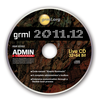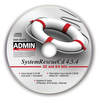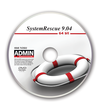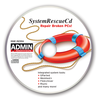« Previous 1 2 3 4
Four rescue systems compared
Emergency Response
One unpleasant experience for any system administrator is a server that does not respond as expected. Difficult questions follow: Why did the reboot fail? How can the server be resuscitated? The first question is especially difficult to answer, because if the computer won't even start, it is impossible to log in to diagnose the problem. Enter rescue systems: They come in many flavors, each with its own particular strengths. In this article, I sound out four flavors of rescue Linux: Grml, Knoppix, Rescatux, and SystemRescueCd.
Bootstrapping for an Emergency
A couple of questions need to be clarified before a test can produce meaningful results: What functions do rescue systems need to fulfill? What workflow should the administrator set up in advance so that the rescue system is ready in case of an emergency?
In the past, systems like Grml or Knoppix served as useful companions to many administrators when it came to bringing computers back to life that could not be booted. The systems resided on a CD or, in the case of Knoppix, a DVD. However, the rules of the game have changed in recent years: Five years ago, it was quite common for servers to be delivered with CD drives, but you often search in vain to find them on today's systems.
An optical disk drive is now irrelevant in practice: The media rarely play a role when administrators try to revive their systems in an emergency. All current servers boot from flash media, such as a USB flash drive or SD card, although admins rarely boot from portable media now; they normally use one of the management frameworks from the major manufacturers (e.g., HP iLO, Dell DRAC, IBM RSA) instead of hotfooting it around a data center with a USB flash drive.
These systems work independently of the operating system on the host and boot the server on demand from any medium. In case of an emergency, a reboot can also be performed using the generic
...Buy this article as PDF
(incl. VAT)
Buy ADMIN Magazine
Subscribe to our ADMIN Newsletters
Subscribe to our Linux Newsletters
Find Linux and Open Source Jobs
Most Popular
Support Our Work
ADMIN content is made possible with support from readers like you. Please consider contributing when you've found an article to be beneficial.







